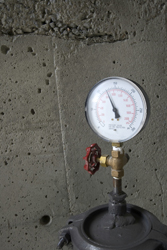Reducing the risk of hydrogen technologies
The 'Safety of hydrogen as an energy carrier' (Hysafe) project set out to contribute to the transition to enhanced EU sustainable development by facilitating the safe introduction and commercialisation of hydrogen as an energy carrier of the future. The network sought to do this by improving on and coordinating current knowledge, understanding and experience of hydrogen safety. Project partners also aimed to harmonise the fragmented research base and contribute to EU safety requirements, standards, codes of practice and improved technical culture for hydrogen handling. The objectives were thus geared to providing a base from which to communicate hydrogen-related risks, and supporting the removal of barriers to the safe implementation of hydrogen technology. Project work was carried out according to specific clusters of focus. In 'basic research', the emphasis was on 'Integration of experimental facilities (IEF)' to provide support for jointly performed experimental work and integration of research capacities and expertise. Two internal projects, Inshyde (hydrogen releases in confined and partially confined spaces) and HyTunnel, made up this cluster. The emphasis in 'risk management' was on the ability to perform proper risk analyses of hydrogen applications. Towards this end, the consortium worked to establish a tool to streamline skills and know-how, and encourage cooperation among partners. For the purposes of 'dissemination', objectives centred on producing a biennial report on hydrogen safety; and there was a long-term objective of developing a complete reference database. The 'management' cluster was established to oversee a coordinated approach to road-mapping, assess the project's technical progress and develop a business plan in preparation for a follow up to the Hysafe Network of Excellence. The Hysafe project thus helped pave the way toward a robust and reliable framework for assessing the safety of hydrogen technologies and applications. The consortium's efforts will go a long way to harmonising testing procedures and quality assurance standards.







